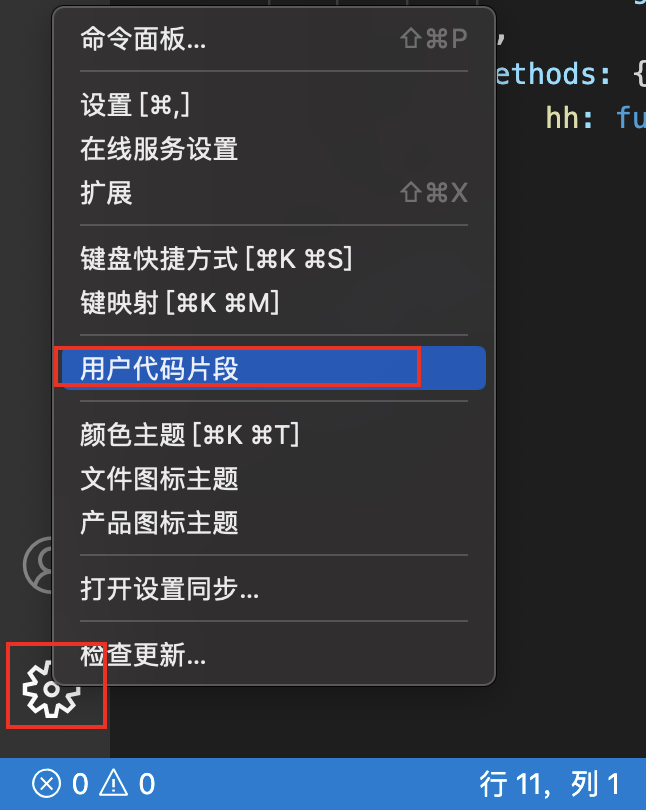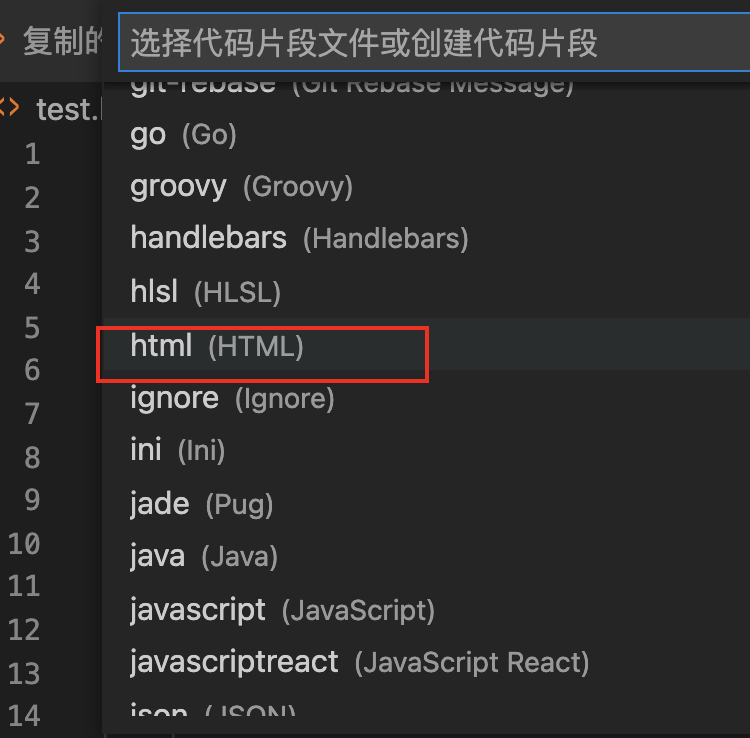

这样打开了一个json文件
更改整个文件的内容如下
{
// Place your snippets for html here. Each snippet is defined under a snippet name and has a prefix, body and
// description. The prefix is what is used to trigger the snippet and the body will be expanded and inserted. Possible variables are:
// $1, $2 for tab stops, $0 for the final cursor position, and ${1:label}, ${2:another} for placeholders. Placeholders with the
// same ids are connected.
// Example:
// "Print to console": {
// "prefix": "log",
// "body": [
// "console.log(‘$1‘);",
// "$2"
// ],
// "description": "Log output to console"
// }
// \t \" \n都是转义字符,而空格就是单纯的空格,输入时可以输入空格
// \t 的意思是 Tab键(横向跳到下一制表符位置)
// \" 的意思是 双引号
// \n 的意思是回车换行
"vue_learn_template": {
"prefix": "!v", //触发标志
"body": [
"<!DOCTYPE html>",
"<html lang=\"en\">",
"<head>",
"\t<meta charset=\"UTF-8\">",
"\t<meta name=\"viewport\" content=\"width=device-width, initial-scale=1.0\">",
"\t<meta http-equiv=\"X-UA-Compatible\" content=\"ie=edge\">",
"\t<title>Document</title>",
"\t<script src=\"vue.js\"></script>",
"</head>\n",
"<body>",
"\t<div id =\"app\"> \n",
"\t</div>\n",
"\t<script>",
"\t var area = new Vue({",
"\t\tel: \"#app\",",
"\t\tdata: {},",
"\t\tmethods: {}",
"\t });",
"\t</script>",
"</body>\n",
"</html>"
],
"description": "vue学习时创建文件的模板" // 模板的描述
}
}
<!DOCTYPE html>
<html lang="en">
<head>
<meta charset="UTF-8">
<meta name="viewport" content="width=device-width, initial-scale=1.0">
<meta http-equiv="X-UA-Compatible" content="ie=edge">
<title>Document</title>
<script src="vue.js"></script>
</head>
<body>
<div id ="app">
</div>
<script>
var area = new Vue({
el: "#app",
data: {},
methods: {}
});
</script>
</body>
</html>
原文:https://www.cnblogs.com/icemiaomiao3/p/14628840.html